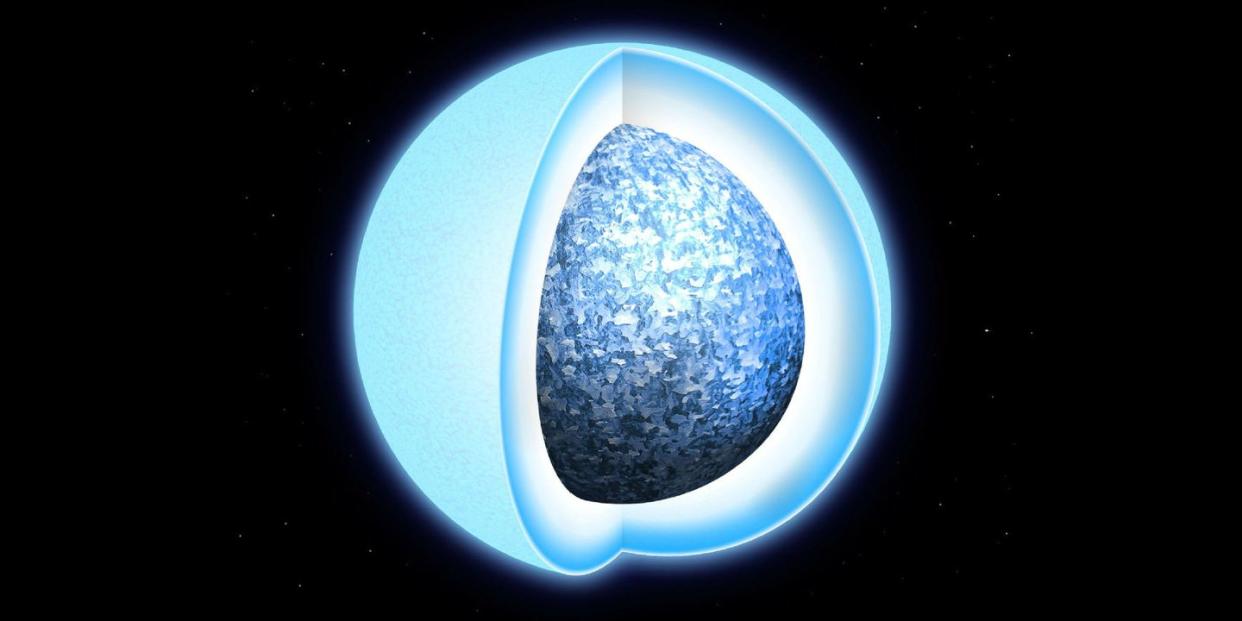When the Sun Dies, a Giant Crystal Will Take Its Place

"Hearst Magazines and Yahoo may earn commission or revenue on some items through these links."
Like all stars, our sun began in a nebula, where gas and dust collapsed on itself in a flurry of cosmic friction. Building pressure and heat created nuclear fusion, which ignited the star into shining. Hydrogen fused into helium, and for billions and billions of years, the center of our solar system has blazed on.
Eventually, though—in about five billion years—the hydrogen, its fuel source, will run low and heavier elements will begin to fuse. This will build pressure and cause the sun to expand and engulf the orbits of its neighboring planets, Mercury, Venus, and Earth. Now a Red Giant and highly unstable, our sun will emit enormous pulses of plasma and gas. As it blasts most of its matter off into space, it will transform into a huge fluorescent nebula before collapsing into a mere speck of its former self: a cold, dense white dwarf.
It’s what happens next that fascinates Pier-Emmanuel Tremblay, a physicist at the University of Warwick in England, whose paper, published this week in the journal Nature, examines what happens to these star corpses, or “stellar embers."
For one, they become unimaginably dense, “200,000 times denser than Earth.” (Scooping a spoonful of white dwarf would be like hefting a helicopter in one hand.) Over billions of years, they transition from a liquid to a solid. The larger the dwarf, the quicker the transition. But unlike the liquid in your ice tray freezing into cubes, the oxygen and carbon that make up a white dwarf start crystallizing at 18 million degrees Fahrenheit.
The cooling process takes so long because the crystallizing dwarf cores emit heat, which changes their color and luminosity, creating a visual effect the researchers describe as a “pile-up” of stars. It’s not an actual pile-up though. When looking at objects as far away as 330 light-years from the sun, there’s a good chance you’re looking at light that has already been snuffed out.
Thanks to the European Space Agency’s Gaia spacecraft, which has been charting star positions in the Milky Way since 2013, Tremblay and his team were able to analyze 15,000 white dwarfs at varying stages of their cooling evolution. Their work offers the first evidence that white dwarfs indeed solidify into crystals. The findings also suggest that some of these star corpses are 15 percent older than originally thought.
Understanding the gravitational energy release of dying stars and how it slows their cooling could help us determine the age of other stars. Thankfully, the star that makes life on Earth possible has about 10 billion years to go before shrinking into a crystallized hunk of matter.
Source: Nature
You Might Also Like

